A Look Back at the History of Cades Cove
Before it became one of the most visited spots in the Great Smoky Mountains National Park, Cades Cove had a long and layered past that shaped the valley we see today. From Native American roots to pioneer homesteads, every trail and cabin in the Cove tells a story.
Long Before the Tourists: Cherokee Roots
Centuries ago, this peaceful valley was known by the Cherokee as Tsiya’hi, meaning “Otter Place,” thanks to the otters found along the stream that winds through the area. The Cherokee didn’t build permanent settlements here, but they used the cove seasonally to hunt, fish, and gather resources like wild plants and game. Evidence of their presence still exists, especially in the form of ancient trails and foraging grounds.
In 1819, the Treaty of Calhoun forced the Cherokee to give up all claims to the area, including Cades Cove. But that doesn’t mean their legacy vanished—your drive through the loop or walk through the woods follows paths they once traveled.
The First Settlers: John and Lucretia Oliver
Just one year after the treaty, in 1818, newlyweds John and Lucretia Oliver arrived in the valley after being guided in by a man named Joshua Jobe. With no roads, no stores, and no neighbors, they relied on the land – and occasional help from the Cherokee – to survive a harsh first winter in a crude shelter made of logs.
By 1821, they had built a proper cabin. Today, you can still see a preserved version of it near the start of the Cades Cove Loop Road. It’s one of the oldest standing structures in the Smokies, offering a glimpse into what frontier life was really like.
A Growing Community (1820s–1850s)
As word spread, more families came to settle. Names like the Tiptons, Shields, Gregorys, and Cables became part of the local story. People cleared the land for farming, raised livestock, and built cabins, barns, smokehouses, and churches. The average homestead ranged from 50 to 150 acres, depending on what the family could manage.
By 1850, around 685 people lived in the cove. They created a tight-knit farming community where everyone knew each other. Many descendants of these families still live in East Tennessee today- and some even return to the Cove to visit family plots and preserved buildings.
The Civil War and a Divided Valley
When the Civil War hit, Cades Cove, like much of East Tennessee, was divided. Most locals supported the Union, but Confederate guerrilla fighters frequently raided the area. In one of the most tragic episodes, a respected community leader named Russell Gregory was killed after trying to defend the valley. His grave can still be found in the Primitive Baptist Church cemetery.
The war left the valley shaken and set back the small economy. It took decades for families to recover.
Faith and Simplicity: Churches in Cades Cove
Religion played a central role in daily life. The first church, Cades Cove Baptist Church, formed in 1825. Eventually, theological disagreements split the group, and both Primitive Baptist and Missionary Baptist churches were built.
In 1902, a Methodist church joined them. Today, you can still walk through all three historic churches on the Loop, where visitors often stop to read old grave markers or listen to the eerie silence echo through the empty pews.
Industry and Innovation
Despite its rural roots, the Cove had signs of progress. In the late 1800s, John P. Cable built a gristmill and sawmill along Mill Creek. It was powered by water and processed corn and lumber for families across the valley.
The Cable Mill still operates today as part of the Cades Cove Visitor Center area, where you can also explore a barn, blacksmith shop, and cantilever barn—all restored to show life as it was.
Moonshine, Hard Times, and Holding On
As the 20th century approached, life in the Cove began to change. With Prohibition came moonshining—and remote spots like Chestnut Flats became ideal locations for hidden stills. Locals knew who the moonshiners were, but often kept quiet. Conflicts did arise though, especially when law enforcement or temperance-minded neighbors got involved.
Even with small updates like telephones and a post office, Cades Cove remained largely untouched by modern life. The people were independent, deeply religious, and rooted in the land.
Becoming Part of the Park (1930s)
In the late 1920s and early 1930s, the U.S. government began acquiring land for what would become Great Smoky Mountains National Park. While the idea was popular with conservationists, many Cove residents were resistant. Some were forced out through eminent domain, while others were allowed to stay under lifetime leases.
The last school in the Cove closed in 1944. Church services continued into the 1960s, even after the park had taken full control.
A Living Museum
Today, Cades Cove stands as one of the few places where visitors can see, feel, and walk through history. More than a dozen original structures remain, including log homes, barns, mills, and churches.
The National Park Service made the conscious decision to preserve Cades Cove in its 1800s state, maintaining the open fields and clearings. That’s why, unlike other valleys in the park, Cades Cove doesn’t reforest—it’s kept as a snapshot of a pioneer Appalachian village frozen in time.
How to Get to Cades Cove: Parking and Directions
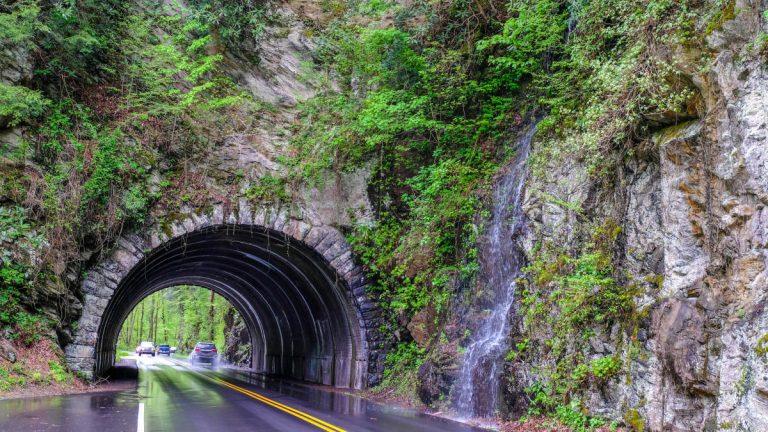
Cades Cove is located inside the Great Smoky Mountains National Park and is one of the most popular spots in the area. It’s easy to reach by car and offers plenty of parking, but traffic can be heavy, especially during peak season. Here’s how to get there and what to expect for parking.
Directions to Cades Cove
You can access Cades Cove via three main routes, all leading to Laurel Creek Road, the only entrance to the loop.
1. From Gatlinburg (25–30 miles, about 1 hour)
Take US‑441 (Newfound Gap Road) into the national park. After passing the Sugarlands Visitor Center, turn right on Little River Road and stay on it, roughly 20 miles, until it becomes Laurel Creek Road, which leads into Cades Cove
2. From Pigeon Forge (26–31 miles, about 1 hour)
Option A: Follow US‑441 into Gatlinburg and use the Gatlinburg–Sugarlands route above.
Option B: Turn onto Wears Valley Road (via traffic light #3), then onto Line Springs Road and Little River Road, leading to Laurel Creek Road
3. From Townsend (11 miles, about 20 minutes)
Head west on Townsend Entrance Road/TN‑73, then turn onto Laurel Creek Road directly into Cades Cove
Parking Rules & Tips
Parking near popular spots like Cables Mill, John Oliver Cabin, or Abrams Falls trailhead fills quickly. Parking is first come, first served, but here’s what to do:
- Arrive early (before 9 AM) to secure a space and beat crowds
- Park in pull-offs only—do not block the single-lane road.
- Expect delays during summer, fall, weekends, and on Wednesday vehicle-free (bike-only) days
Parking Tag Information
All vehicles parked longer than 15 minutes in the park must display a parking tag. These tags do not grant park entry—they cover any vehicle left parked. You can buy daily, weekly, or annual tags ($5/15/40) from:
Kiosks near Sugarlands Visitor Center, Townsend Wye, or at Cades Cove orientation shelter on the loop.
In-person at sites like Gatlinburg Welcome Center, Sugarlands Visitor Center, or the Cades Cove Visitor Center
Important to know:
Display daily/weekly tags face-up on the dashboard, or annual tags in the front windshield
- No tag is needed if you are just driving through without parking
Quick Tips
One Lane Only: The loop is single-lane and one-way, so turn-offs are the only places to stop. Traffic can be slow during peak times
- Vehicle-Free Days: From May through September, Wednesdays are car-free—ideal if you want to bike the loop
- Amenities: Restrooms are available at the Cades Cove Visitor Center. No gas stations inside the loop—fuel up in Townsend before you enter.
Best Time to Visit Cades Cove

Weather and Seasonal Considerations
Spring (March to May)
Spring in Cades Cove brings blooming wildflowers, rushing creeks, and active wildlife. Temperatures are mild, usually ranging from the 50s to 70s during the day. You may encounter rain or early morning fog, which makes for peaceful, misty views. Spring is a great time for hiking and photography, especially in April and early May.
More info: NPS Seasonal Weather Guide
Summer (June to August)
Summer is lush, green, and full of activity. Wildlife is often visible in the early morning or late evening. High temperatures reach the 80s, and thunderstorms are common in the afternoons. This is also peak visitor season, so expect heavy traffic and limited parking, especially mid-morning to late afternoon.
Plan ahead: Cades Cove Visitor Information
Fall (Late September to November)
Fall is one of the most popular times to visit, thanks to the colorful leaves and cooler temperatures. Leaf color usually peaks in early to mid-October. Expect daytime highs in the 60s and chilly mornings. Arrive early, especially on weekends, as crowds are common and traffic builds quickly.
Check foliage reports: Smoky Mountains Fall Color
Winter (December to February)
Winter is the quietest time in Cades Cove. With fewer visitors, it’s ideal for peaceful walks and scenic drives. Snow and ice may temporarily close roads, so check ahead before driving. Daytime highs range from the 30s to 50s. Wildlife sightings are less common but still possible in the early morning.
Get updates: Road Conditions and Weather
Best Times for Sunrise or Sunset Views
Sunrise
Arriving at or before sunrise gives you the best chance of seeing wildlife and catching golden light over the open fields. Morning fog is common in spring and fall, creating a dramatic atmosphere for photos. Some of the best sunrise spots include the open fields near Sparks Lane and the entrance pull-offs.
View sunrise times for Townsend, TN
Sunset
Sunset views are best from areas with western exposure, like the pull-offs near Hyatt Lane or Rich Mountain Road. Arrive at least an hour early to find parking. The soft evening light makes the valley glow, and deer often appear near the meadows as the sun goes down.
View sunset times here
Tips for Visiting Cades Cove
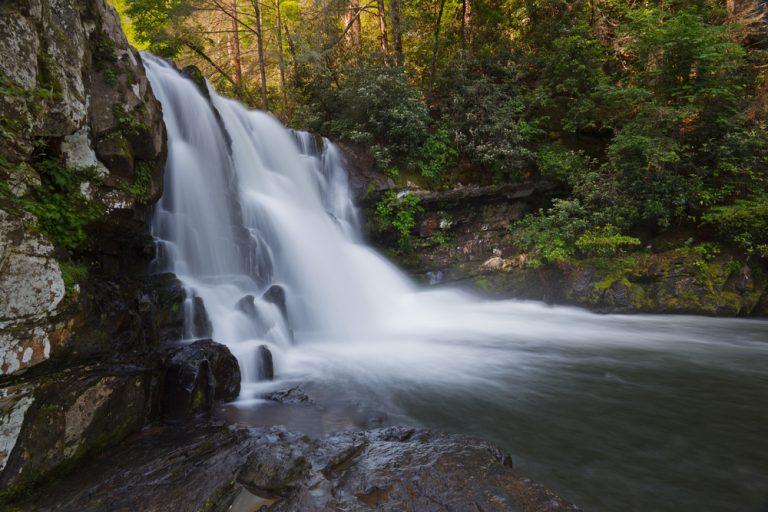
What to Wear and Pack
Clothing:
Wear comfortable walking shoes or hiking boots if you plan to explore on foot.
Dress in layers—mornings can be chilly even in summer, while afternoons can get hot.
In warmer months, wear lightweight, breathable fabrics and bring a hat or sunglasses.
During cooler months (especially November to March), bring a warm jacket, gloves, and a hat.
What to Bring:
Water and snacks – There are no restaurants or food vendors in the cove.
Binoculars for spotting wildlife from a safe distance.
Bug spray in spring and summer.
Sunscreen – Even on cloudy days.
Camera or phone for photos (signal is weak, so download maps beforehand).
Cash or card if you plan to stop at the Cades Cove Visitor Center gift shop.
A printed map of the Cades Cove Loop – GPS is not always reliable inside the park.
Download official maps here (NPS)
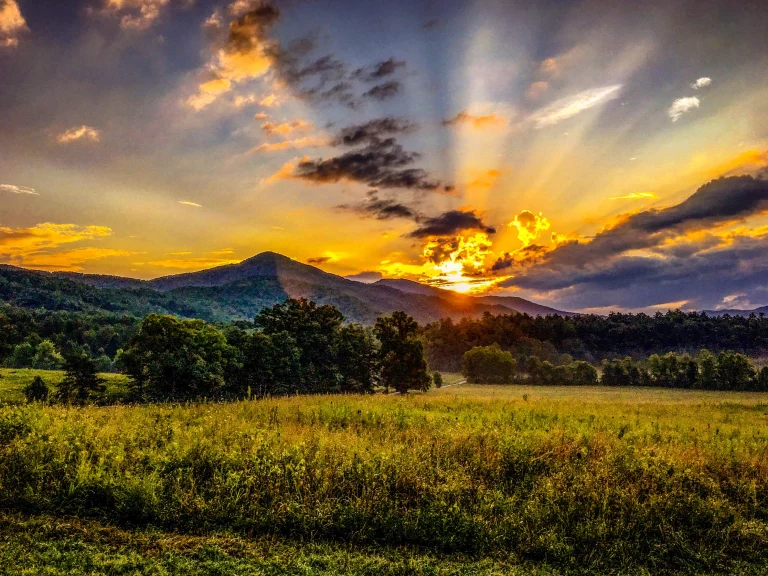
What to Wear and Pack
Clothing:
Wear comfortable walking shoes or hiking boots if you plan to explore on foot.
Dress in layers—mornings can be chilly even in summer, while afternoons can get hot.
In warmer months, wear lightweight, breathable fabrics and bring a hat or sunglasses.
During cooler months (especially November to March), bring a warm jacket, gloves, and a hat.
What to Bring:
Water and snacks – There are no restaurants or food vendors in the cove.
Binoculars for spotting wildlife from a safe distance.
Bug spray in spring and summer.
Sunscreen – Even on cloudy days.
Camera or phone for photos (signal is weak, so download maps beforehand).
Cash or card if you plan to stop at the Cades Cove Visitor Center gift shop.
A printed map of the Cades Cove Loop – GPS is not always reliable inside the park.
Download official maps here (NPS)
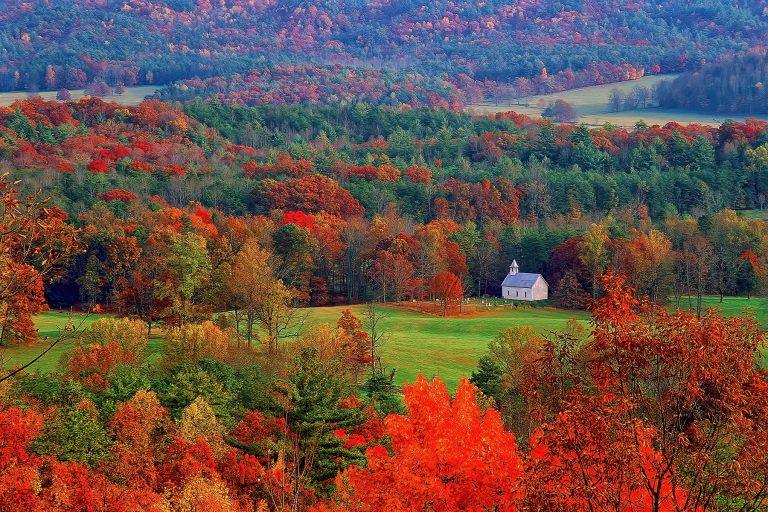
Accessibility Information
Cades Cove offers options for visitors of all abilities.
The Cades Cove Loop Road is fully accessible by car. You can enjoy the scenic views and wildlife from your vehicle.
The Cades Cove Visitor Center is wheelchair accessible, with paved paths and accessible restrooms.
Some historic sites (like Cable Mill and the churches) have uneven terrain or gravel walkways, which may be harder to navigate by wheelchair.
The Restroom Facilities at the Visitor Center and orientation shelter are ADA-compliant.
For questions about accessibility in the national park, call the Sugarlands Visitor Center at (865) 436-1291 or visit the official accessibility page.
Top Things to Do in Cades Cove
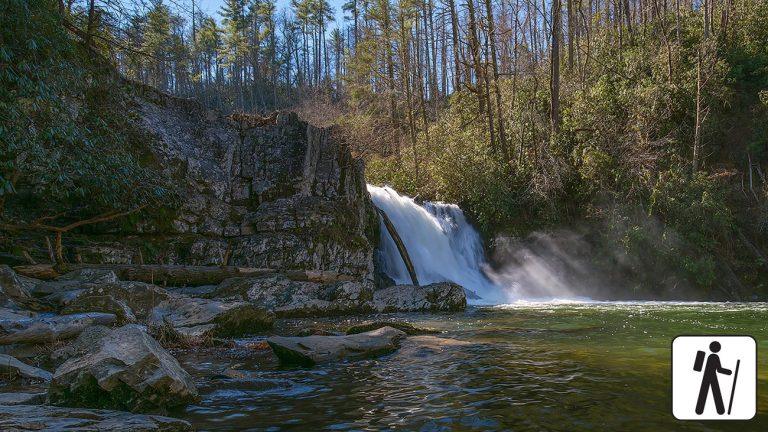
Cades Cove offers something for all types of visitors: a combination of nature, history, and outdoor fun that makes it a must-visit destination.
Hiking Trails
Abrams Falls Trail is the most popular hike—an approximately 5-mile round trip with around 675 feet of elevation gain. It takes you along Abrams Creek through pine-oak and rhododendron forests to a 25-foot waterfall and a deep pool at its base There is a restroom at the trailhead.
Cades Cove Nature Trail, right along the loop road, is a short and easier option, ideal for families. It winds through woods and fields and requires only a brief stop on a pull-off before looping back.
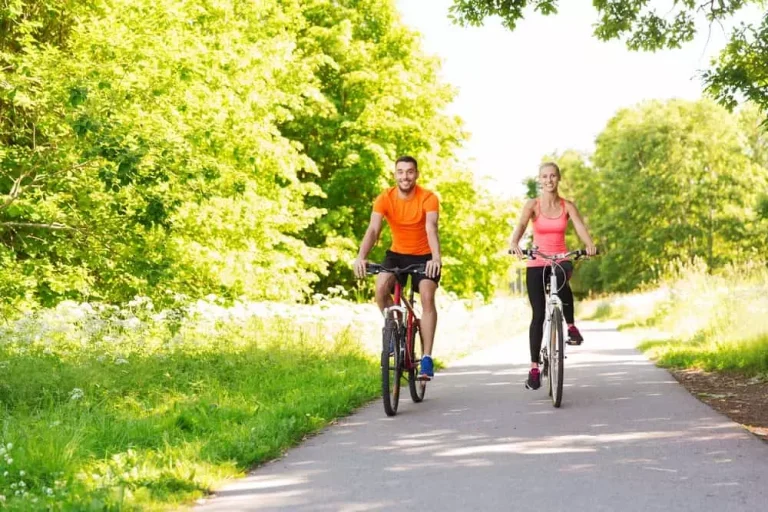
Biking the Loop
Cycling the full 11-mile loop is a favorite for many, especially on Wednesday mornings from May through September, when traffic is restricted to bicycles and pedestrians. Bikes let you stop quietly to photograph wildlife or enjoy the historic structures without worrying about crowds.
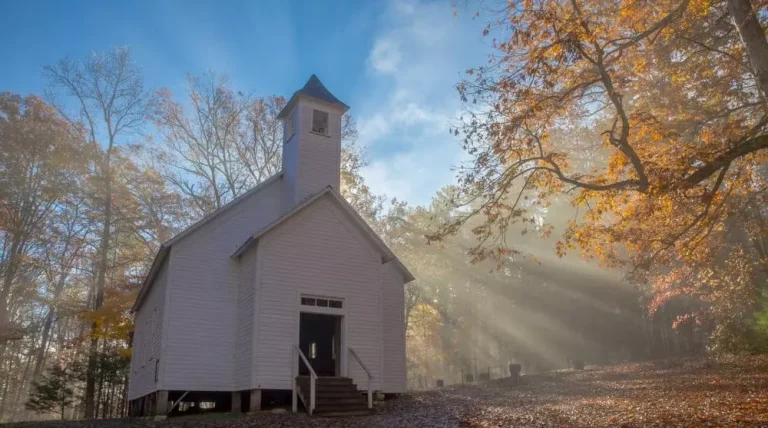
Touring Historic Sites
The John Oliver Cabin, built around 1822, is the first permanent homestead in the Cove and still stands today.
- The three old churches—Primitive Baptist, Missionary Baptist, and Methodist—offer a glimpse of community life in the 1800s.
- Cable Mill Historic Area, near the Visitor Center, includes a working overshot gristmill (built circa 1868), a barn, and a blacksmith shop, all powered by creek water.
Wildlife in Cades Cove
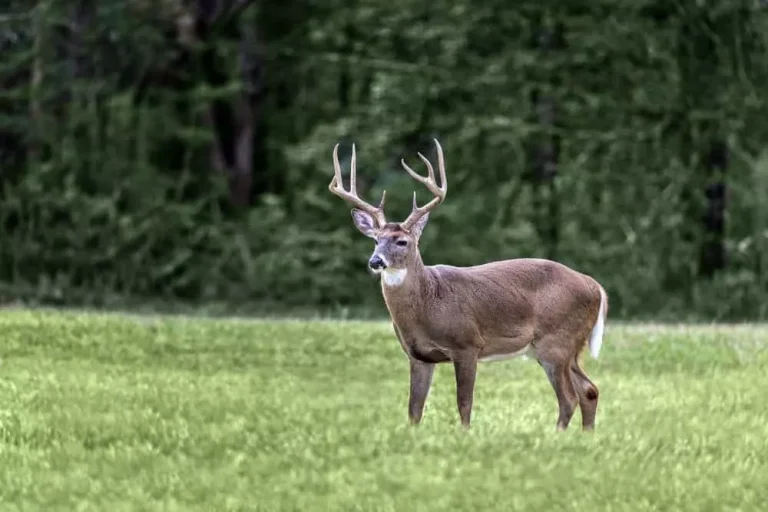
Cades Cove is famous for its wildlife. You can expect to see several kinds of animals along the loop.
Common Animals
Black bears—active most often at dawn and dusk, especially in spring and summer
- White-tailed deer—visible in fields year-round, especially in winter when the leaves are gone
- Wild turkeys—roam in open meadows throughout the day
- Coyotes, groundhogs, salamanders, otters, beavers, skunks, raccoons, and various songbirds may also be spotted
Best Times to Spot Wildlife
Early morning and late evening are the prime times for viewing animals. Wildlife is most active during these cooler, quieter hours, and animals tend to avoid midday traffic
Safety Tips and Rules
Stay at least 50 yards away from all wildlife—especially bears
Use designated pull-offs to stop, and avoid blocking the road.
Bring binoculars for a better view from a safe distance
Never feed animals—it harms them and disrupts their natural behavior.
Historic Sites in Cades Cove
From humble cabins to working mills, Cades Cove preserves the everyday lives of Appalachian settlers. Here are the key historical highlights:
John Oliver Cabin
Built around 1822 by the first permanent European settler in the valley, this cabin remains one of the oldest structures in the Smokies. It’s located near the loop’s beginning and serves as a poignant reminder of the tough frontier life.
Primitive Baptist Church
Organized in 1825 and rebuilt after an 1839 split, this church and its cemetery (where Russell Gregory is buried) reflect deep spiritual roots in the community
Cable Mill Historic Area
Built in 1868 by John P. Cable, the working gristmill used creek-powered wheels to grind grain. Today, it’s fully restored with a barn, smokehouse, blacksmith shop, and museum—all powered by flowing water
Preservation of Settlement History
When the park acquired Cades Cove in the 1930s, the National Park Service chose to preserve it as a living pioneer landscape rather than letting it return to forest. Modern buildings were removed, leaving behind only original cabins, barns, mills, and churches
Final Thoughts
Cades Cove is more than just a scenic drive—it’s a window into the past and one of the most peaceful places in the Great Smoky Mountains National Park. Whether you’re coming for the wildlife, the historic buildings, or the mountain views, planning ahead can help you make the most of your visit.
With hiking trails, biking opportunities, picnic areas, and year-round beauty, Cades Cove offers something for every kind of traveler. Be sure to check current road conditions, arrive early, and bring everything you need, as services are limited inside the loop.
Where to Stay
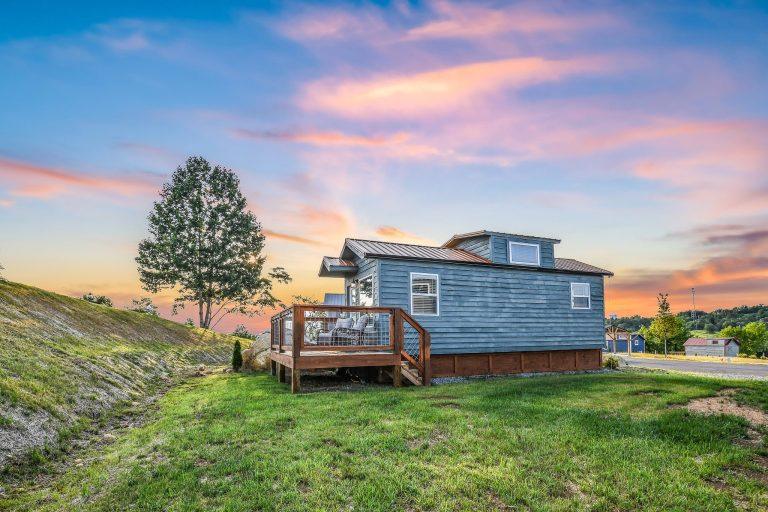
If you’re planning a trip to Cades Cove and need a place to stay, our tiny homes at Sojourn Lodging are just an hour away. We’re located in Sevierville, near the base of the Smoky Mountains, making it easy to visit the caverns and still enjoy a quiet, comfortable place to unwind afterward.
Our stays are designed to be simple but elevated – think private decks, cozy sleeping spaces, kitchenettes, Wi-Fi, and streaming-ready TVs. Every unit has been thoughtfully laid out to give guests space to relax, reset, and reconnect with nature or each other. Whether you’re here for a solo trip, a weekend getaway, or a group retreat, we have options that fit your plans.
We offer:
- Pet-friendly units
- Self check-in and private entry
- On-site parking
- Tiny homes for couples, families, and group bookings
- Peaceful surroundings that still keep you close to all the action in Pigeon Forge and Gatlinburg
Want a closer look? Click here to explore our tiny homes or read more about what it’s like to stay at Sojourn.



